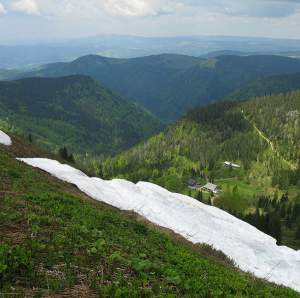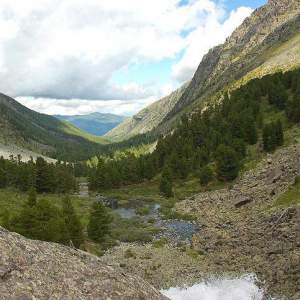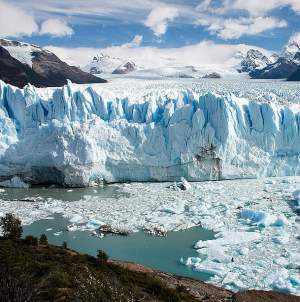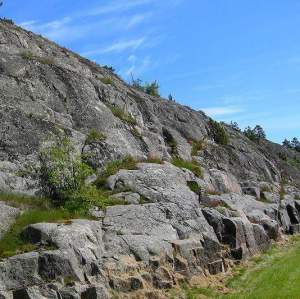Glacial landforms
What are glacial landforms?
Glacial landforms are dynamic landforms created by the erosional and depositional actions due to the movement of glaciers during glaciation. These landforms get created during advancement of glaciers in glacial period and also during their retreat in the interglacial period.Glacial formation
Glaciers form when there is continuous accumulation, compression, compaction of snow in a natural depression in the geological formation. When the landform fills up with the accumulated compressed snow and ice, the snow-ice overflows through a geological opening, such as the gap between two mountains, caves and slopes. When the temperatures are low, there is further accumulation of snow-ice.The overflow of snow-ice gives rise to movement of ice mass along a path of natural gradient with least resistance, altering the surrounding landforms on its way. With increase in temperatures, there is melting of ice and the ice mass retreats, discharging meltwater.
Glaciation
Our Earth has gone through, at least five known glaciation periods. The Quaternary glaciation is the last of these glaciations during Earth's history.
Image attribution: Andreas Schwarzkopf | License:CC BY-SA 3.0
Glacial movements erode soil and rock giving rise to erosional landforms. Whenever there is increase in flow of meltwater, the rock debris and soil get deposited forming depositional landforms. Broadly, two types of glaciations are recognized. Alpine or mountain glaciation is small and occurs in high elevations. Continental glaciation occurs close to poles and also in other warmer regions during the peak of the ice age.
Glacial erosional landforms
Movement of snow-ice have multiple erosional effects on the surrounding landscape. There is slow crushing, scouring, plucking, abrading and scrapping action on the bottom as well as surrounding areas. The resultant erosional landforms include striations, cirques, cirque stairways, glacial horns, arêtes, spillways, trim lines, horns, U-shaped valleys, fjords, roches moutonnées, overdeepenings and hanging valleys.Glacial depositional landforms
Glacial movements also transforms the surrounding land through deposition. The crushed, plucked and abraded rocks, sand and clay carried away by meltwater flow as well as left behind by the glacial retreat create characteristic deposits. The resultant depositional landforms include till, medial moraine, terminal moraine, ground moraine, drumlin, outwash plain, eskers and kame.Glacial lakes and ponds
Snow ice movements also cause lake and pond landforms. Depression, formed by a huge block of ice separated from the main flow is known as kettle lake. A cirque by get over-deepened to form tarn lake. Paternoster lakes and glacial lakes are some of the other landforms created during these movements. It is to be noted that glaciers themselves are not landforms, though they take up unique shapes.Keywords: glacial landforms, dynamic nature, landforms
Google+ page
By Mahmood Syed Faheem

Image attribution: Anvacher | License:CC BY-SA 3.0

Image attribution: Luca Galuzzi - www.galuzzi.it | License:CC BY-SA 2.5
Advertisement
Popular topics in dynamic nature
- Care of nature
- Global warming
- Methane gas and global warming
- What is environment
- Natural environment definition
- Planet Earth
- What are landforms
- Types of land formations
- Features of coastal landforms
- Factors affecting coastal land
- Nature pictures
- Landscape definition
- Natural landscape
- Current topic in dynamic nature: Glacial landforms
Advertisement
Disclaimer:
Not professional advice - The above content is just for informational & educational purpose only
If you need specific medical advice please seek a professional doctor who is licensed or knowledgeable in that area.
Not professional advice - The above content is just for informational & educational purpose only
If you need specific medical advice please seek a professional doctor who is licensed or knowledgeable in that area.
